While traveling from Arizona to California, we stayed in Cathedral City, California. It’s not far from Indio. For some reason, we thought we had seen Joshua Tree National Park before. The fact was, we hadn’t.
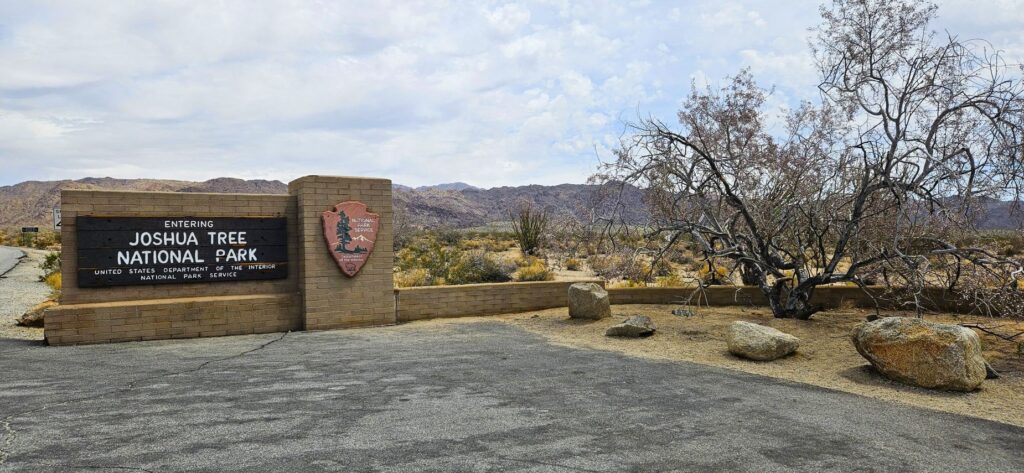
Of course, my first goal was to get my National Parks Passport book stamped at the visitors’ center. We entered the park from the south entrance from Hwy 10 and stopped at the Cottonwood Visitor Center.
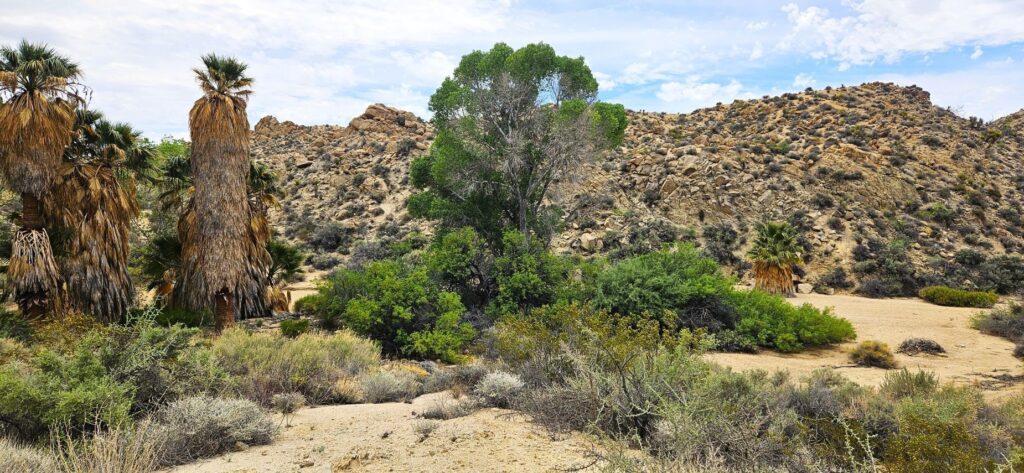
Not far from the visitors’ center was a picnic area where we stopped and had our lunch. Near there was Lost Palms Oasis, the largest grove of California fan palms in the park. These huge bearded trees thrive due to a constant water supply from Cottonwood Spring.
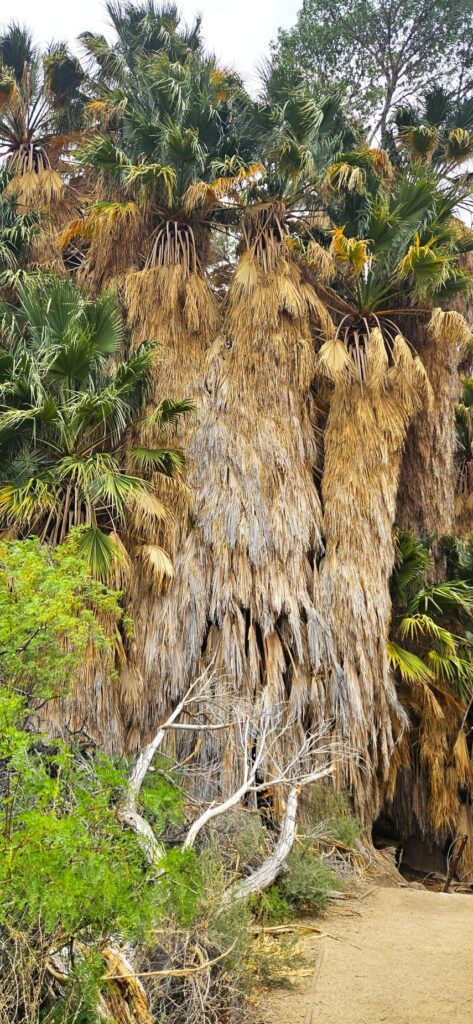
From there, we worked our way northwards through the park. We saw very few Joshua trees at first. The temperatures in the desert in early May were quite pleasant since we were climbing in elevation the whole time.

The road is about a 30 mile drive, but we made several stops along the way to learn about the desert plants and geology. This alluvial fan coming is a common sight where the mountains meet the desert floor. Material from the mountains is washed down by streams during rains and flash floods. As the water slows, sediment gets deposited from the streams.
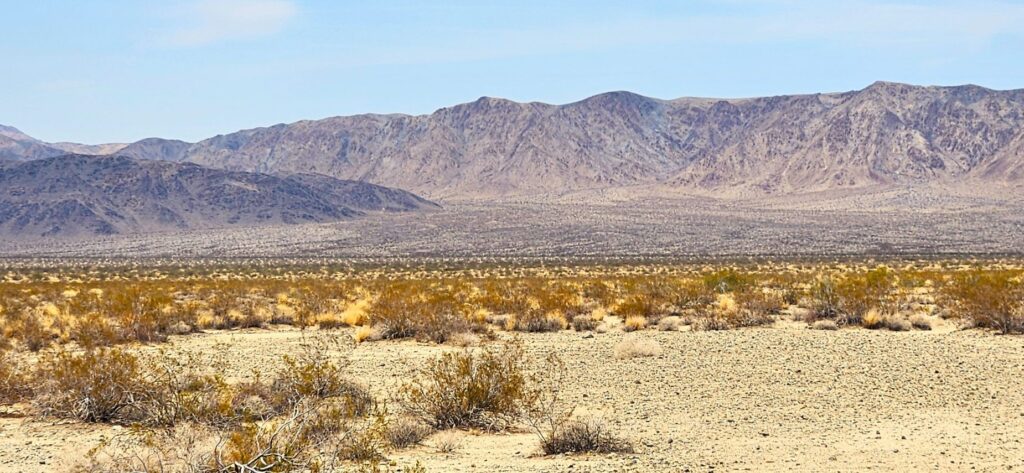
The alluvial fan gets more moisture from runoff to support more plants like the ocotillo and chollas. Believe it or not, ocotillos are more closely related to blueberries and tea plants than cactus plants!

Our next stop was the cholla garden. I’ve never seen so many chollas in one place! There were warning signs telling tourists not to get too close. Chollas are also known as “jumping cactus” because if you happen to brush up against one, it will stick to you.

Joshua trees are a type of yucca plant. Sometimes it’s hard to tell the difference. I thought at first these yucca plants were baby Joshua trees. But they are yuccas.
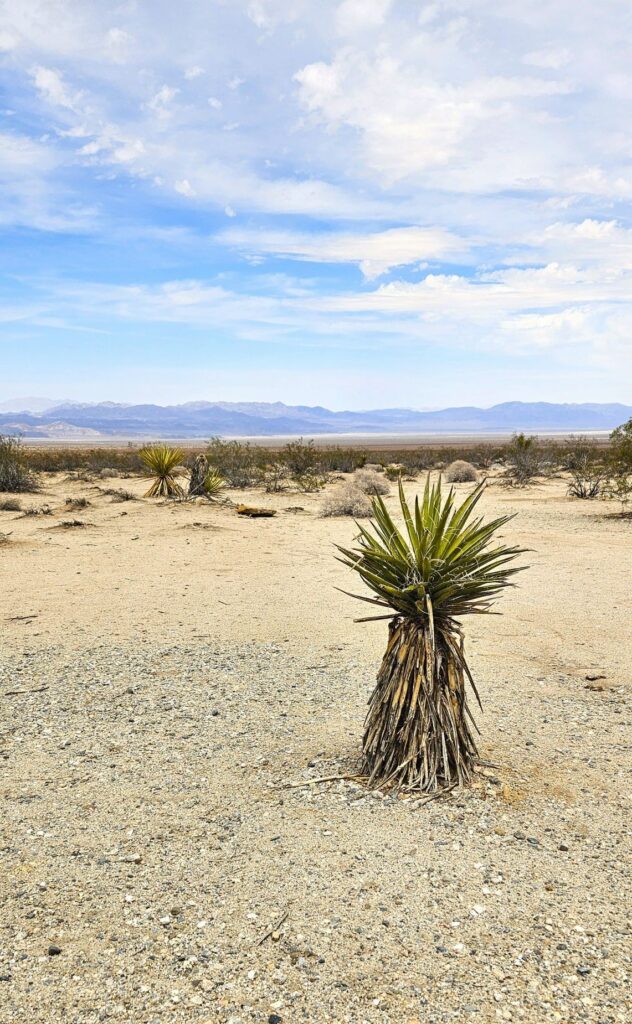
The next photo shows the difference between a yucca and a Joshua tree. It’s pretty easy to tell when they’re this big and side by side.
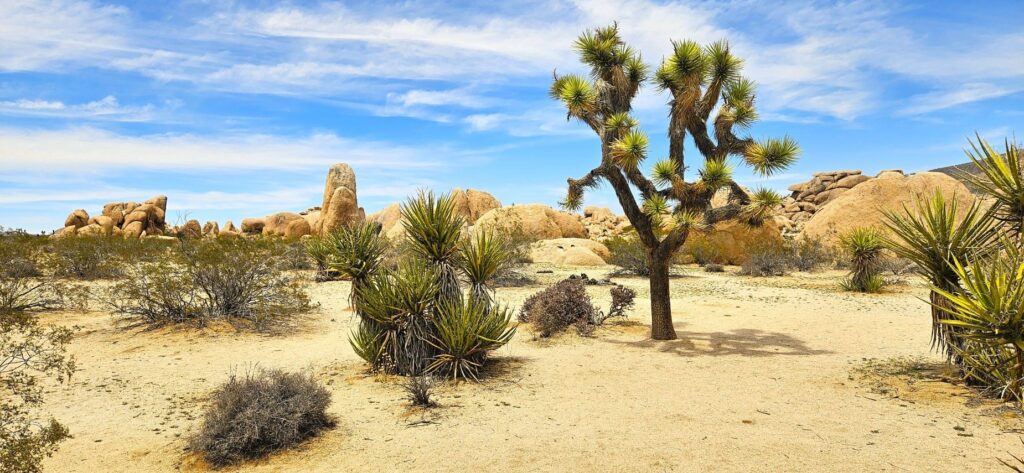
It was late spring when we visited, but there were plenty of desert flowering plants.
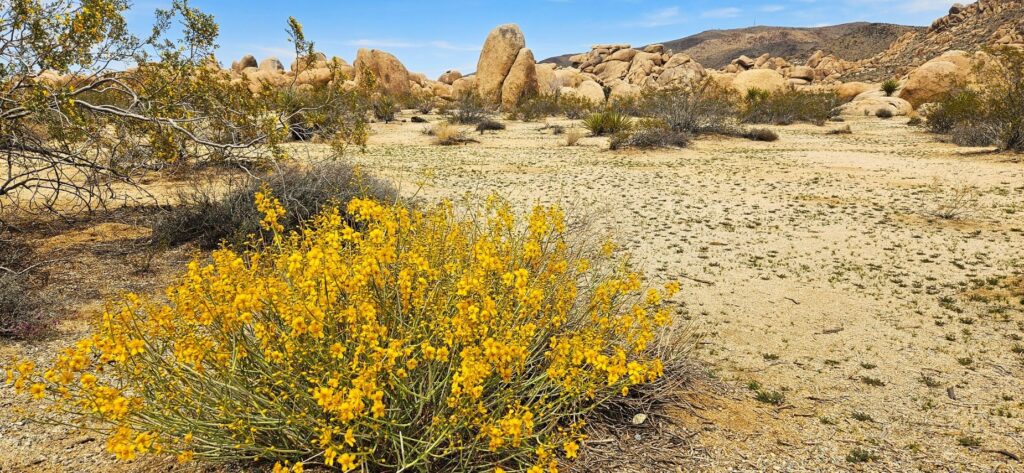
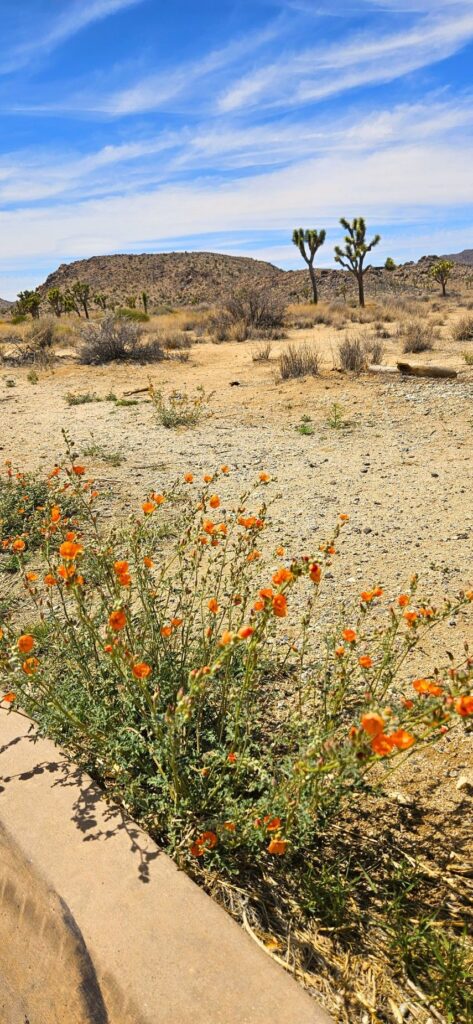
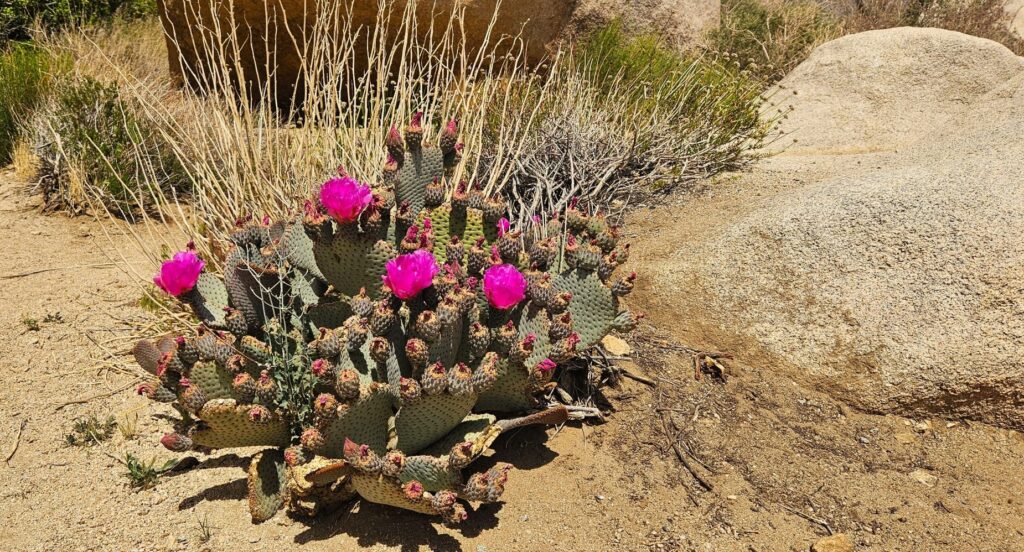
Along our route was this interesting rock formation called “Skull Rock.” Joshua Tree National Park has a variety of rock formations. This is a popular one for tourists.
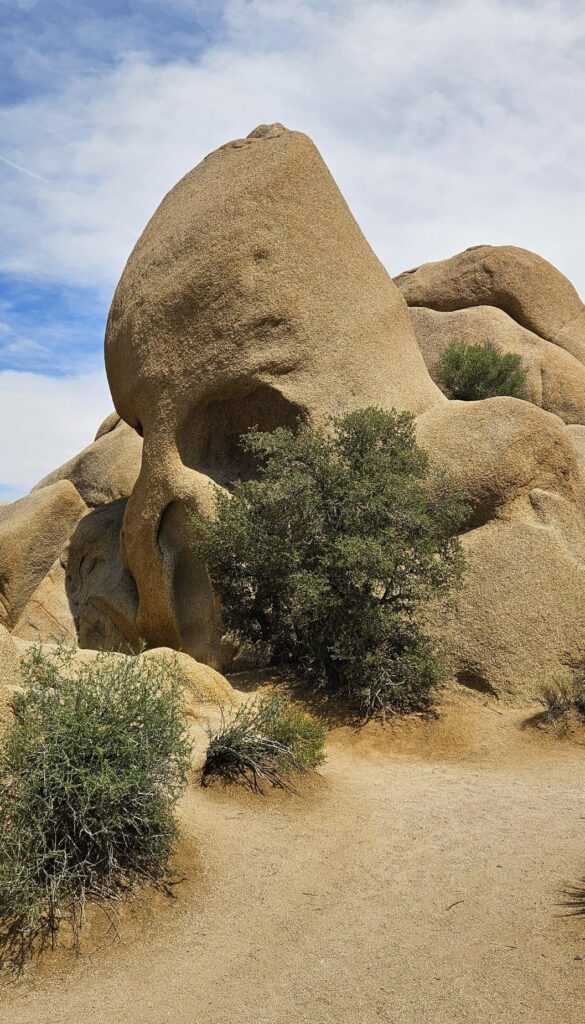
As we got further and further into the park, we began to see huge Joshua trees. I’ve seen many Joshua trees in my lifetime, but these were the biggest I’ve ever seen.
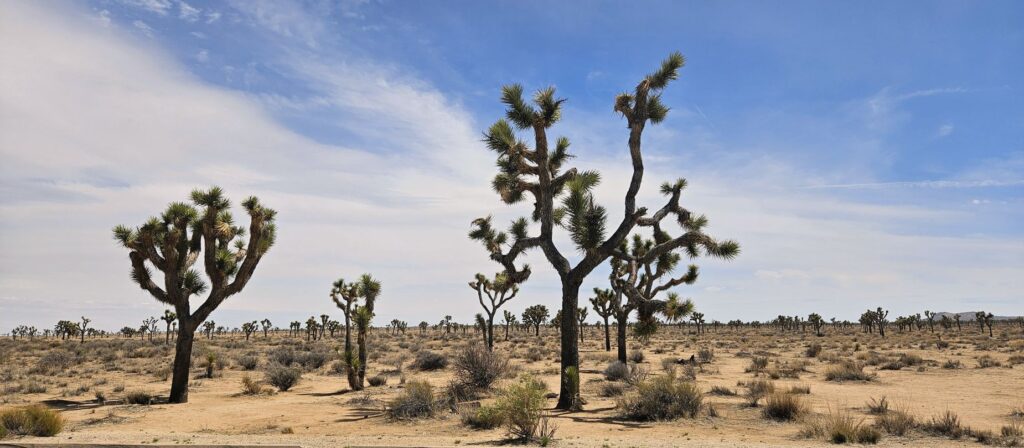
The trunks of these trees were like the size of an oak tree, and had many “arms.”
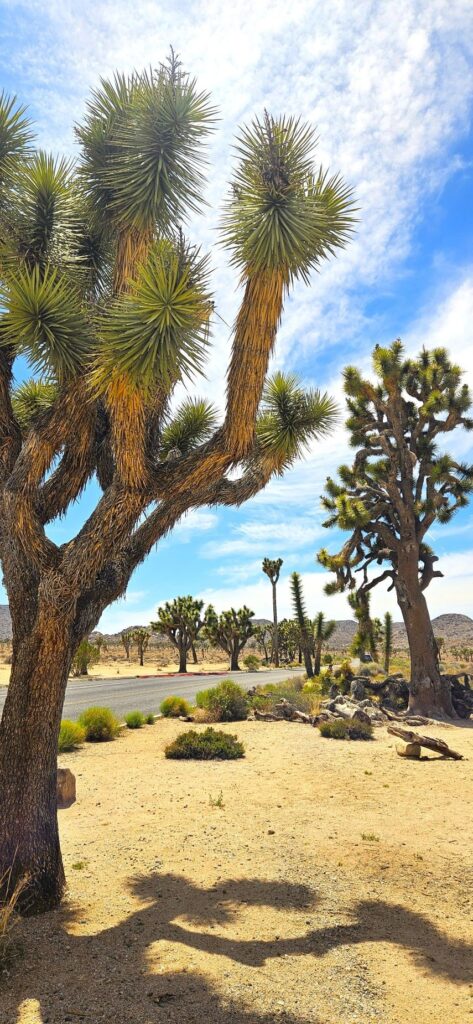
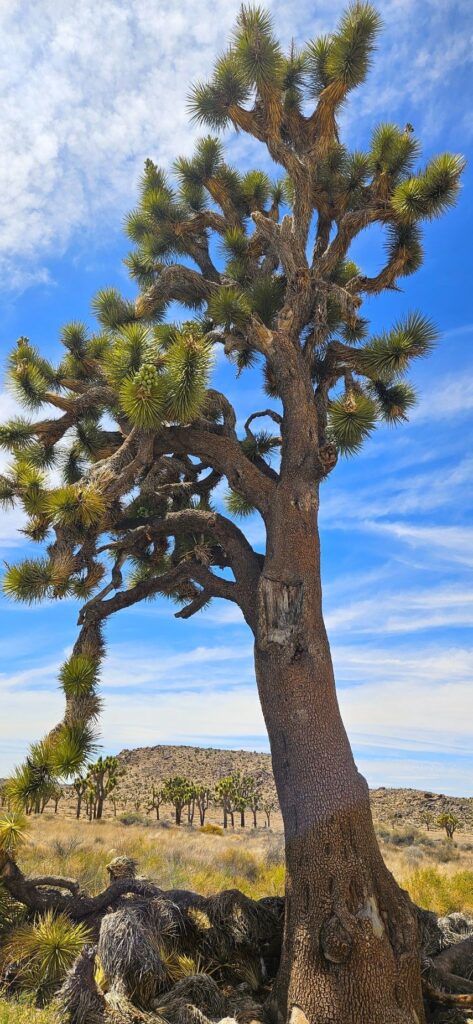
Another stop along our route was this “balancing rock” formation. It looked like it could topple down at any time.
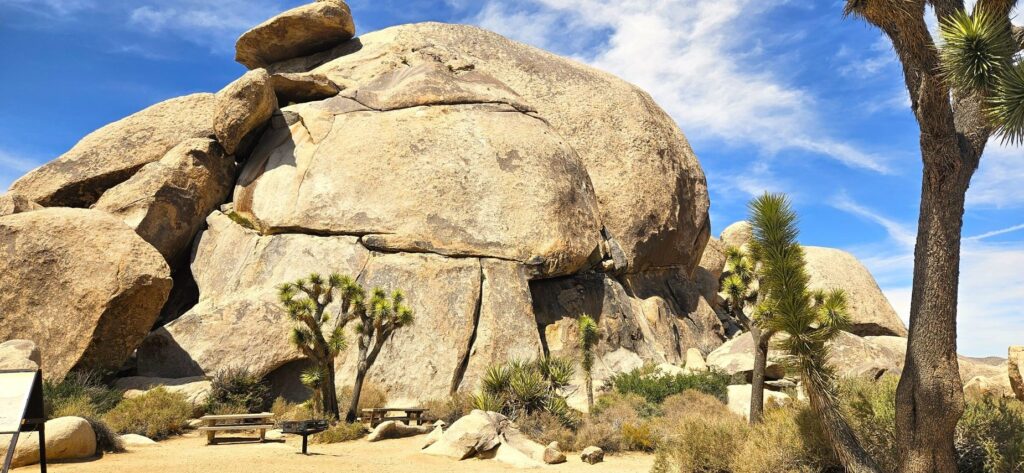
Our last stop in the park was Keys View where we could look out over the whole Coachella Valley. I didn’t know this, but the San Andreas Fault line runs right down the middle of this valley.
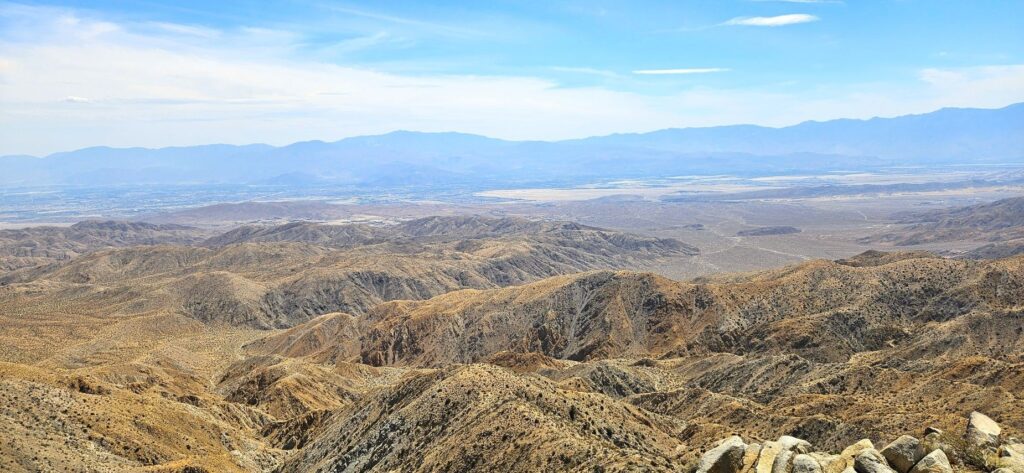
At over 5,000 feet in elevation, we enjoyed the cool breezes as the day continued to warm up.
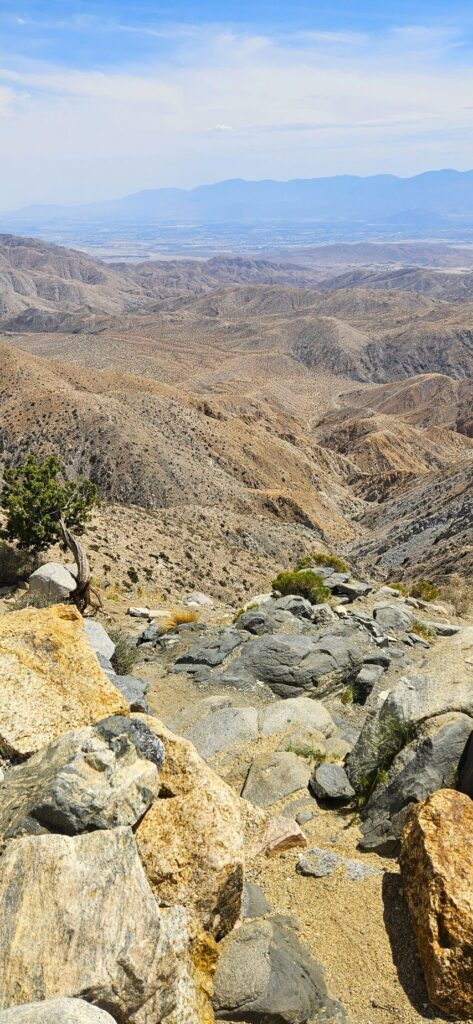
Joshua Tree National Park is worth seeing. The variety of desert plants and animals that can withstand the extreme temperatures of desert weather is a testament to God’s marvelous creation.
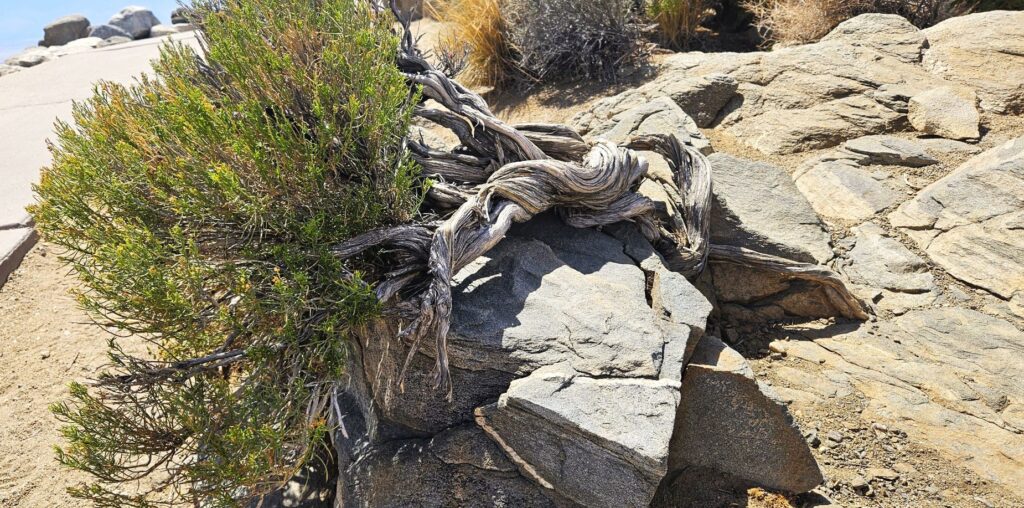
“The wilderness and the desert will rejoice,
And the desert will shout for joy and blossom.” Isaiah 35:1a
